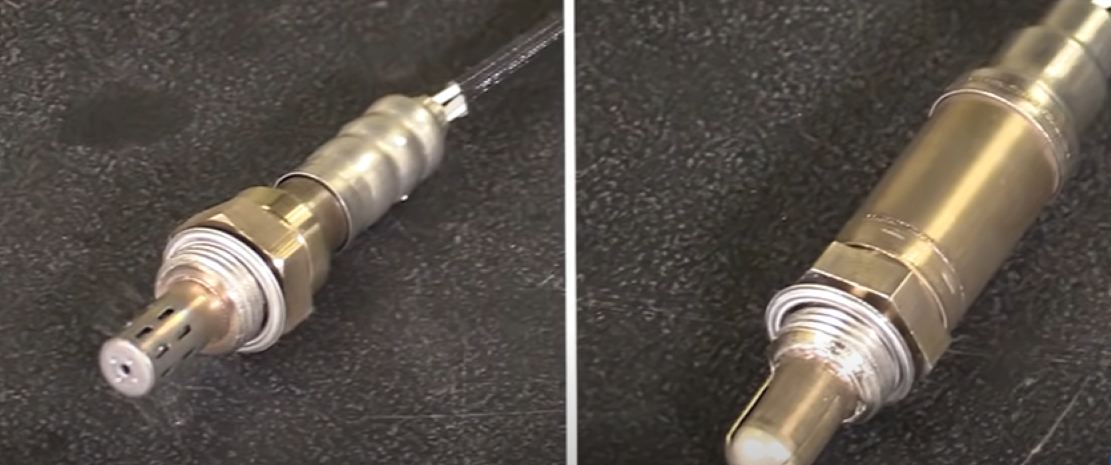
The 2018 BMW M550xi is a powerful and luxurious vehicle designed to deliver exceptional performance.
To maintain this high level of performance, the vehicle relies on various components, including its oxygen (O2) sensors.
Understanding the 2018 BMW M550xi O2 sensor location is crucial for vehicle maintenance and troubleshooting.
In this article, we’ll dive deep into the O2 sensor system, its role in your car, the locations of the sensors, and how to handle common issues.
Our goal is to provide easy-to-understand, optimized content that helps you identify and work with these critical components.
What Is an O2 Sensor, and Why Is It Important?
Oxygen sensors, commonly referred to as O2 sensors, play a critical role in a vehicle’s engine performance and emissions control.
These sensors monitor the amount of oxygen in the exhaust gases and send data to the car’s engine control unit (ECU).
This helps the ECU adjust the air-fuel mixture for optimal combustion, resulting in:
- Improved fuel efficiency
- Reduced emissions
- Enhanced engine performance
Also Read: Danielle Idzi_ A Rising Star in Tech, Dance, and Social Advocacy
How Many O2 Sensors Does the 2018 BMW M550xi Have?
1. Total Number of O2 Sensors
The 2018 BMW M550xi typically has four oxygen (O2) sensors as part of its emissions control system.

2. Two Upstream Sensors
Location:
Positioned near the exhaust manifold.
Function:
These sensors monitor the oxygen levels in the exhaust gases before they enter the catalytic converter. This data helps the engine control unit (ECU) adjust the air-fuel mixture for optimal combustion.
3. Two Downstream Sensors
Location:
Located after the catalytic converters along the exhaust system.
Function:
These sensors measure the oxygen content in the exhaust gases after the catalytic converters, ensuring the converters are working efficiently to reduce emissions.
4. Bank 1 and Bank 2 Explanation
Bank 1:
Refers to the side of the engine with cylinder 1.
Bank 2:
Refers to the opposite side of the engine.
Each bank has one upstream and one downstream sensor, resulting in four sensors in total.
5. Critical Role in Emissions Control
The combination of upstream and downstream sensors ensures:
Efficient engine operation by maintaining the correct air-fuel ratio.
Compliance with environmental regulations by monitoring and optimizing exhaust emissions.
How to Identify O2 Sensor Bank and Position?
1. Understand What “Bank” Means
Bank 1:
Refers to the side of the engine that contains cylinder 1.
Bank 2:
Refers to the opposite side of the engine.
- In a V-engine like the one in the 2018 BMW M550xi, the engine has two banks due to the dual-cylinder layout.
- The vehicle’s service manual or OBD-II scanner can confirm which side is Bank 1 or Bank 2.
2. Sensor Positions Explained
Each bank has two oxygen (O2) sensors:
Sensor 1 (Upstream Sensor):
Located before the catalytic converter, close to the exhaust manifold.
Function: Monitors oxygen levels in the exhaust gases as they leave the engine.
Sensor 2 (Downstream Sensor):
Located after the catalytic converter along the exhaust pipe.
Function: Measures oxygen levels in the exhaust gases after treatment to ensure the catalytic converter is working effectively.
3. Using an OBD-II Scanner to Confirm Location
If your vehicle’s check engine light is on, an OBD-II scanner can provide a diagnostic trouble code (DTC).
Codes like P0131 or P0151 will specify the faulty sensor, including the bank and position. For example:
P0131:
Bank 1 Sensor 1 (Upstream Sensor on Bank 1).
P0152:
Bank 2 Sensor 2 (Downstream Sensor on Bank 2).
4. Visual Identification of Banks
If you don’t have access to a scanner:
Locate Cylinder 1: Use the engine layout to find which side of the engine contains cylinder 1 (this is Bank 1).
Follow the exhaust system to identify upstream (Sensor 1) and downstream (Sensor 2) positions for both banks.
5. Simplified Guide to Positions
- Bank 1, Sensor 1: Upstream sensor on the side with cylinder 1.
- Bank 1, Sensor 2: Downstream sensor on the side with cylinder 1.
- Bank 2, Sensor 1: Upstream sensor on the opposite side of the engine.
- Bank 2, Sensor 2: Downstream sensor on the opposite side of the engine.

Why You Might Need to Locate the O2 Sensors
1. Check Engine Light (CEL) Is On
A common trigger for the check engine light is a malfunctioning oxygen sensor.
The O2 sensors monitor the air-fuel mixture and the performance of the catalytic converter.
If a sensor detects abnormal readings, the ECU activates the CEL.
Locating the sensor helps identify whether the issue is with an upstream or downstream sensor.
2. Preparing for an Emissions Test
If your vehicle is due for an emissions inspection, faulty O2 sensors can cause it to fail.
Downstream sensors, which monitor the catalytic converter’s efficiency, are particularly critical.
Knowing their location makes it easier to replace or inspect them before testing.
3. Poor Fuel Economy
A faulty O2 sensor can send incorrect data to the ECU, causing the engine to run with an improper air-fuel ratio.
This can result in higher fuel consumption. By locating and replacing the affected sensor, you can restore optimal fuel efficiency.
4. Reduced Engine Performance
Issues such as rough idling, misfires, or a noticeable lack of power can stem from inaccurate data from the O2 sensors.
Identifying the sensor’s location allows you to troubleshoot and resolve these performance problems.
5. Diagnosing a Faulty Sensor
Sometimes, specific diagnostic codes (retrieved using an OBD-II scanner) indicate which sensor is malfunctioning.
For instance, a code for “Bank 1 Sensor 1” refers to the upstream sensor on the side of the engine with cylinder 1. Locating this sensor is necessary for repairs.
Also Read: Understanding 24685200081_ An In-Depth Look at Its Meaning, Applications, and Importance
How to Access the O2 Sensors on the 2018 BMW M550xi
Accessing the O2 sensors on the 2018 BMW M550xi requires preparation, the right tools, and safety precautions.
Begin by parking the vehicle on a flat surface, engaging the parking brake, and allowing the engine to cool completely, as the exhaust system can become extremely hot during operation.
The M550xi has four O2 sensors: two upstream sensors near the exhaust manifold (before the catalytic converters) and two downstream sensors located after the catalytic converters along the exhaust pipes.
Use a jack and jack stands to lift and secure the vehicle for better access to the sensors underneath.
Locate the sensors by following the exhaust system, disconnect their electrical connectors, and use an O2 sensor socket or wrench to carefully unscrew and remove them.
If the sensors are rusted or stuck, apply penetrating oil to loosen them.
After inspection or replacement, reinstall the sensors by hand to avoid cross-threading, tighten them securely, reconnect the electrical connectors, and lower the vehicle.
Finally, clear any diagnostic codes with an OBD-II scanner and ensure the repair was successful.
For a smooth process, work with proper lighting and safety gear, and consult a professional if needed.

Symptoms of a Bad O2 Sensor
1. Check Engine Light (CEL)
The most common symptom of a failing O2 sensor is the Check Engine Light turning on.
The vehicle’s ECU detects irregular readings from the sensor and activates the light.
You can confirm the issue by using an OBD-II scanner, which may display codes like P0130 (O2 Sensor Circuit Malfunction) or P0420 (Catalyst System Efficiency Below Threshold).
2. Poor Fuel Economy
A faulty O2 sensor can cause the engine to run too rich (too much fuel) or too lean (too little fuel).
This results in a significant drop in fuel efficiency, meaning more frequent trips to the gas station.
3. Rough Idling and Engine Misfires
When the air-fuel mixture is off due to incorrect readings from a bad O2 sensor, the engine may experience:
- Rough idling (unsteady engine sound while stationary)
- Engine misfires, causing a jerking or sputtering sensation.
4. Increased Emissions
A malfunctioning O2 sensor can lead to incomplete combustion, increasing the amount of harmful gases like carbon monoxide (CO) or nitrogen oxides (NOx) in the exhaust.
This can cause your car to fail an emissions test and negatively impact the environment.
5. Black Smoke from the Exhaust
If the O2 sensor causes the engine to run rich, unburned fuel may enter the exhaust system, producing thick black smoke from the tailpipe.
This can also damage the catalytic converter, which is costly to replace.
Tips for Maintaining Your O2 Sensors
1. Use High-Quality Fuel
Low-quality fuel can lead to carbon buildup on the O2 sensors, reducing their effectiveness.
Always use premium fuel as recommended by BMW to ensure cleaner combustion and fewer contaminants reaching the sensors.
2. Perform Regular Engine Maintenance
Replace your air filter and spark plugs at the recommended intervals to maintain optimal combustion.
Address any issues like oil leaks, which can coat the O2 sensors with residue and affect their readings.
3. Keep the Exhaust System Clean
A clean exhaust system helps O2 sensors function properly.
If you notice excessive soot or deposits in the exhaust, consider using a fuel system cleaner or having the system professionally serviced.
4. Avoid Ignoring Check Engine Lights
If the check engine light is triggered by an O2 sensor-related code, don’t delay diagnostics and repairs.
Prolonged operation with a faulty sensor can damage the catalytic converter and increase emissions.
5. Inspect O2 Sensors During Routine Maintenance
Ask your mechanic to inspect the O2 sensors whenever your car is in for servicing.
Sensors typically last 60,000–90,000 miles, so plan replacements accordingly, especially if you notice symptoms like poor fuel economy or engine performance issues.
FAQs About 2018 BMW M550xi O2 Sensor Location
1. How do I know if my O2 sensor needs to be replaced?
Common signs include poor gas mileage, engine misfires, or a persistent check engine light.
2. Can I drive my car with a bad O2 sensor?
While it’s possible, driving with a faulty O2 sensor can damage the catalytic converter and lead to more expensive repairs.
3. How much does it cost to replace an O2 sensor on a 2018 BMW M550xi?
The cost typically ranges from $200 to $400 per sensor, including parts and labor.
4. Can I replace the O2 sensor myself?
Yes, with the right tools and safety precautions, replacing an O2 sensor can be a DIY project.
5. How often should O2 sensors be replaced?
Most O2 sensors last between 60,000 and 90,000 miles, depending on driving conditions.
Conclusion
Understanding the 2018 BMW M550xi O2 sensor location is essential for maintaining your vehicle’s performance and efficiency.
These sensors play a vital role in emissions control, fuel economy, and engine health.
By regularly inspecting and addressing O2 sensor issues, you can ensure your BMW runs smoothly for years to come.
If you’re experiencing any sensor-related problems, don’t hesitate to consult a professional mechanic or follow the DIY tips provided in this guide.